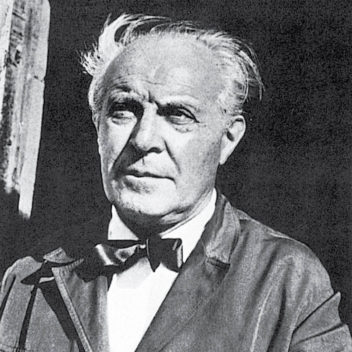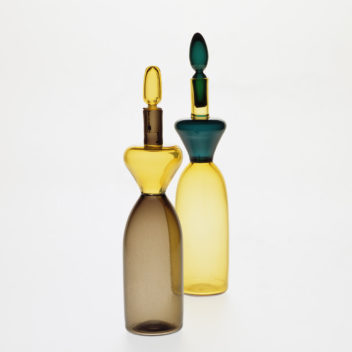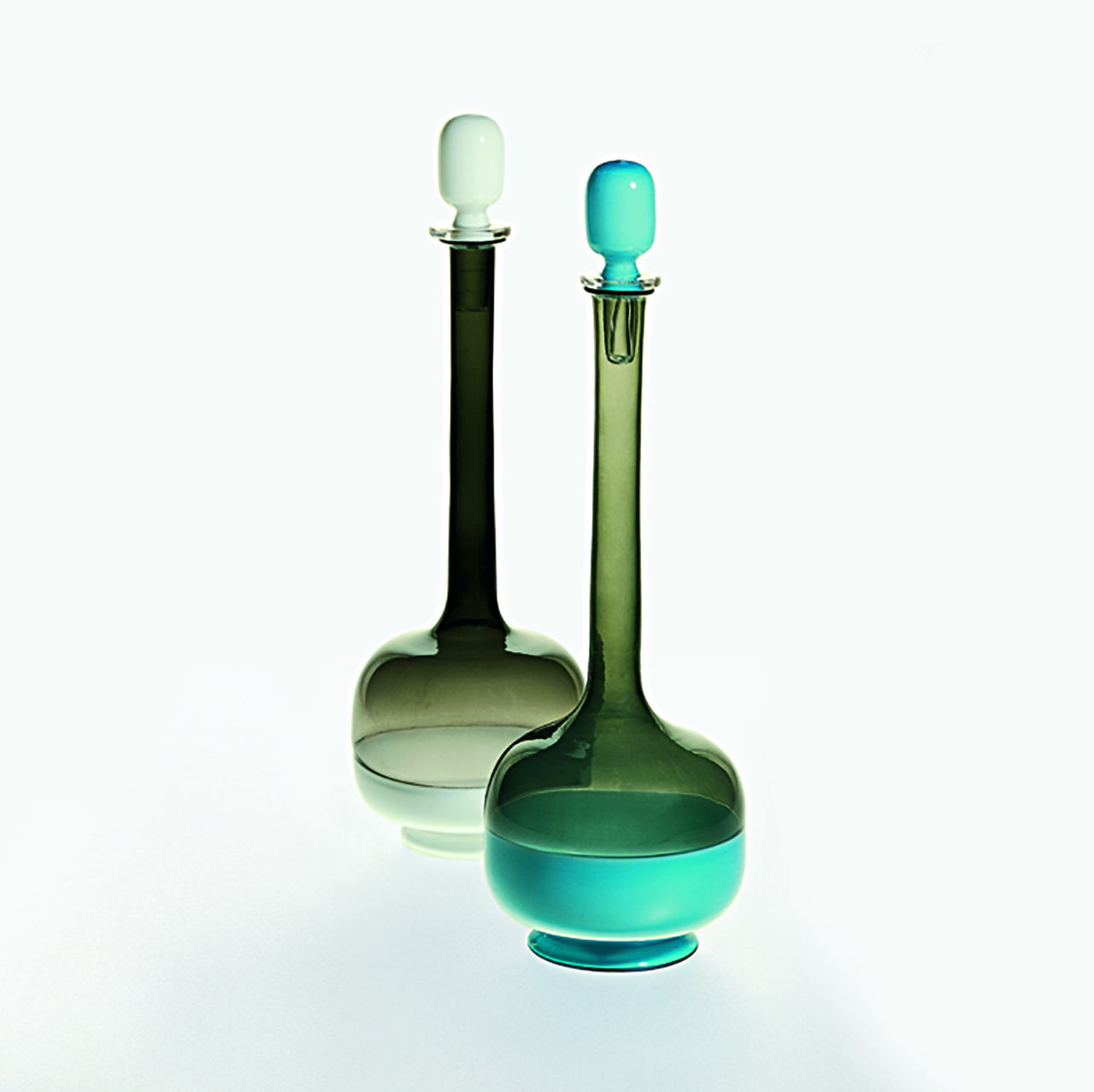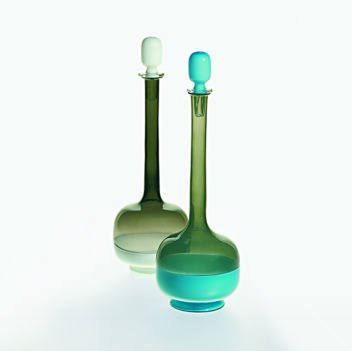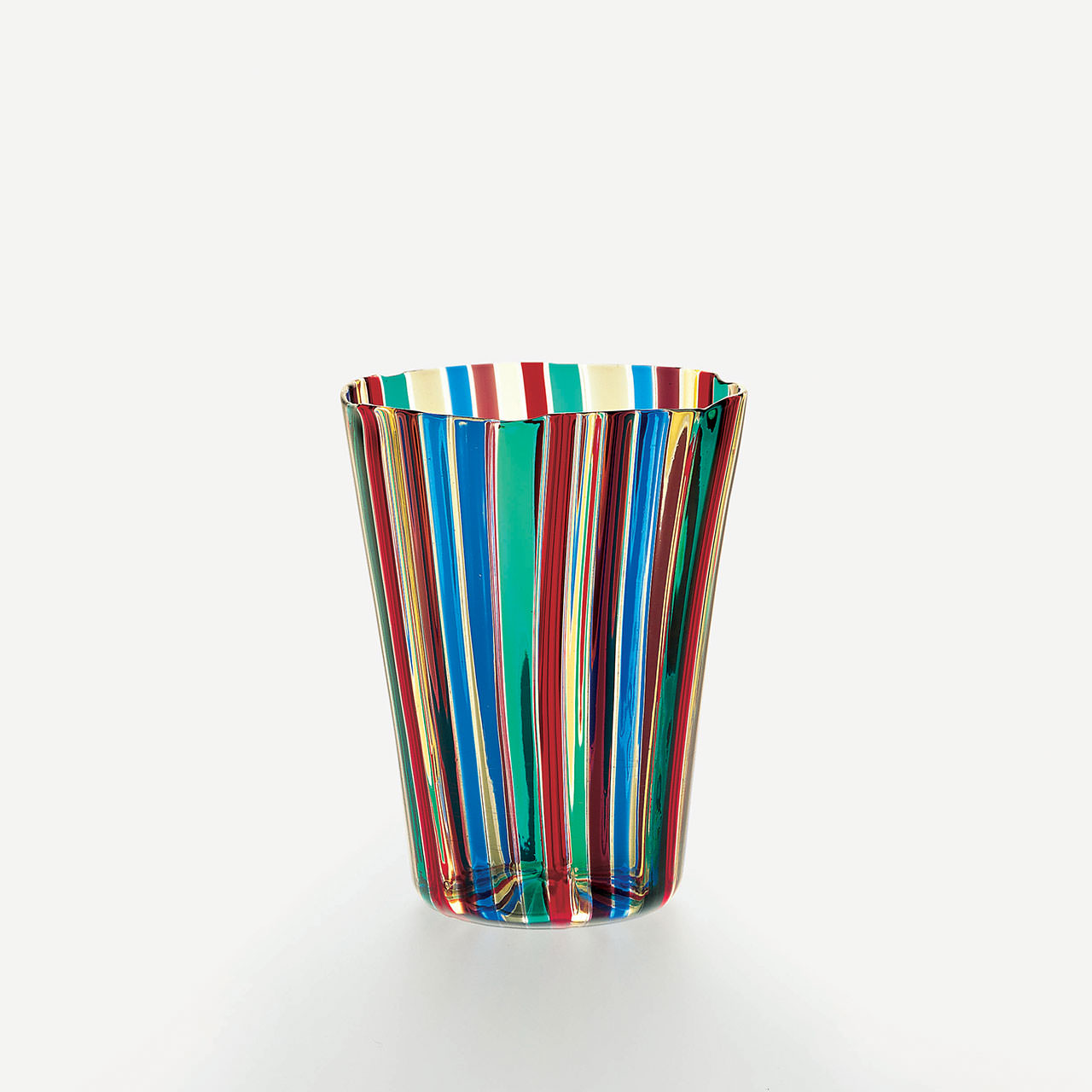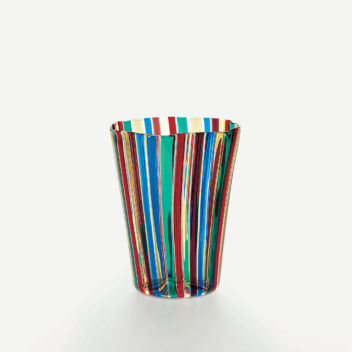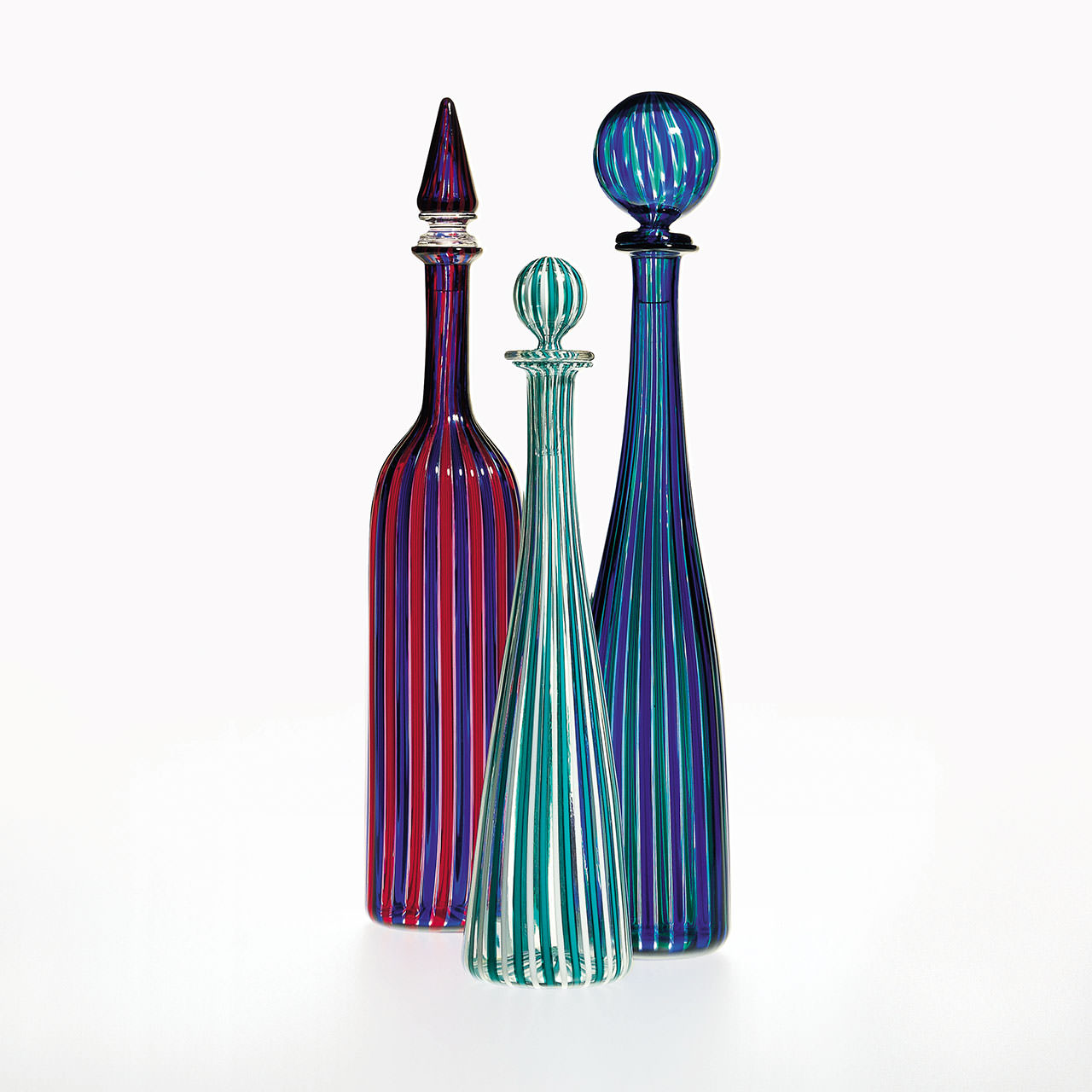Giò Ponti Bottiglie morandianeVenini & C., 1946-1950
Three stoppered decanters from the Morandiane series composed of multicolored vertical glass canes. The canes on the stoppers match the canes on the bottles.
Acid stamped:
venini murano ITALIA.
18 1/4 in. high (46.4 cm)
14 1/2 in. high (36.8 cm)
18 in. high (45.7 cm)
Exhibitions:
2000, New York, Venetian Glass, Museum of Arts & Design;
2001, Milan, Murano: Vetri dalla Collezione Olnick Spanu, Spazio Oberdan.
Bibliography and comparative texts:
Venini, green catalogue, nn. 526.10, 526.12, 526.08;
G. Ponti, 1959, p. 41;
A. Gasparetto, 1960, n. 43;
W. Neuwirth, 1987, n. 39, pp. 218, 220;
G. Duplani Tucci, 1989, pp. 54, 55, n. 27;
F. Deboni, 1989, n. 88;
M. Heiremans, 1993, n. 207;
M. Heiremans, 1996, n. 165;
H. Ricke, E. Schmitt, 1996, n. 110;
Venini Venezia, 1998, p. 68;
Olnick Spanu, 2000, n. 77;
Olnick Spanu, 2001, n. 114.
Two incalmo bottles. One has the base and stopper in lattimo, the other base and stopper are blue pasta vitrea. Both have the neck in grey transparent grey glass.
Acid stamped:
venini murano ITALIA.
13 3/4 in. high (35 cm)
13 3/4 in. high (35 cm)
Bibliography and comparative texts:
R. Linzeler, 1922, p. 666;
C. Carrà , 1923, p. 67;
R. Linzeler, 1923, p. 83;
R. Papini, 1930, n. 570;
G. Mariacher, 1967, p. 98;
R. Barovier Mentasti, 1982, n. 252;
Mille anni…, 1982, n. 503;
F. Deboni, 1984, p. n. 70;
W. Neuwirth, 1987, nn. 7, 104;
A. Dorigato, 1986,
p. 71;
F. Deboni, 1989, n. 1;
L’arte del vetro, 1982, n. 307;
M. Heiremans, 1993, n. 191;
M. Barovier, R. Barovier Mentasti,
A. Dorigato, 1995, n. 15;
A. Venini Diaz de Santillana, 1996, n. 1;
R. Barovier Mentasti, 1998, n. 25;
A. Venini Diaz de Santillana, 2000, n. 1;
Olnick Spanu, 2000, n. 8;
Olnick Spanu, 2001, n. 13.
Two stoppered incalmo bottles from the Morandiane series. One is straw and light aubergine glass with a straw colored stopper, the other is straw and blue glass witha a blue stopper.
Acid stamped:
venini murano ITALIA.
13 1/2 in. high (34 cm)
13 1/2 in. high (34 cm)
Bibliography and comparative texts:
R. Linzeler, 1922, p. 666;
C. Carrà , 1923, p. 67;
R. Linzeler, 1923, p. 83;
R. Papini, 1930, n. 570;
G. Mariacher, 1967, p. 98;
R. Barovier Mentasti, 1982, n. 252;
Mille anni…, 1982, n. 503;
F. Deboni, 1984, p. n. 70;
W. Neuwirth, 1987, nn. 7, 104;
A. Dorigato, 1986,
p. 71;
F. Deboni, 1989, n. 1;
L’arte del vetro, 1982, n. 307;
M. Heiremans, 1993, n. 191;
M. Barovier, R. Barovier Mentasti,
A. Dorigato, 1995, n. 15;
A. Venini Diaz de Santillana, 1996, n. 1;
R. Barovier Mentasti, 1998, n. 25;
A. Venini Diaz de Santillana, 2000, n. 1;
Olnick Spanu, 2000, n. 8;
Olnick Spanu, 2001, n. 13.
